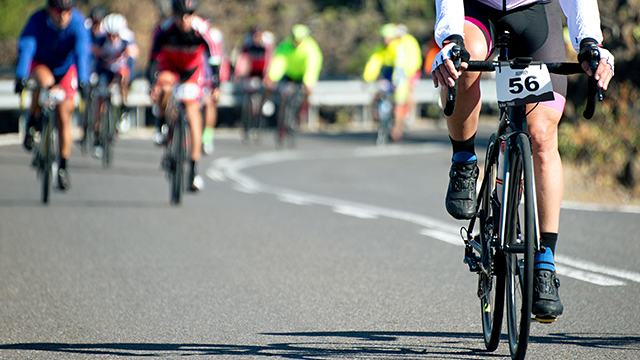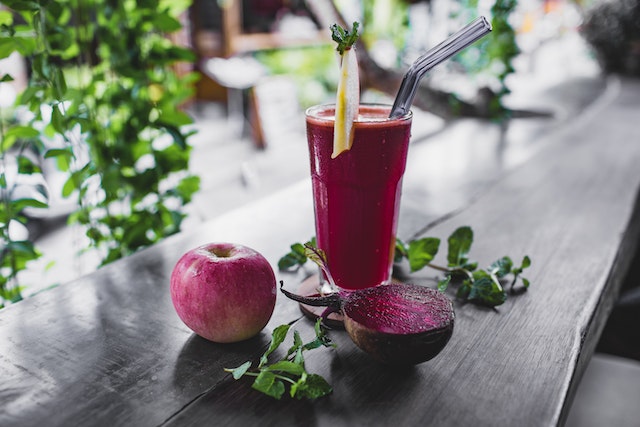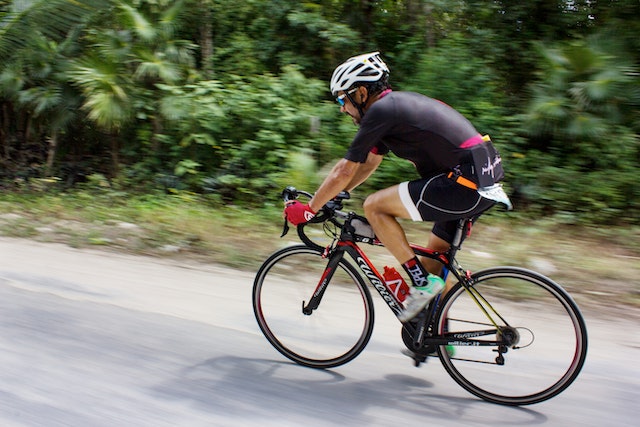Picture yourself gliding through scenic landscapes, the wind rushing past you as you conquer the open road. The excitement and camaraderie of a cycling event or race can be an exhilarating experience, but it also requires careful preparation.
Whether you’re a seasoned cyclist or a beginner, training is essential to ensure you have the endurance and stamina to tackle the challenges ahead. In this article, we will guide you through the process of training for a cycling event or race, helping you reach your full potential and achieve your goals.
By setting clear objectives, creating a structured training schedule, and incorporating effective techniques such as interval training, you can maximize your performance and enjoy every moment of the race.
Additionally, we will discuss the importance of proper nutrition and hydration to fuel your body and enhance your performance.
With these tips and strategies, you will be well-prepared to join the cycling community and find your place among fellow enthusiasts.

1. Setting Clear Goals and Objectives
Get ready to crush your cycling event or race by setting clear goals and objectives! To achieve success, it’s essential to have a clear vision of what you want to accomplish. Setting goals gives you a sense of purpose and direction, motivating you to push beyond your limits and achieve greatness.
Whether you’re a seasoned cyclist or a beginner, establishing clear objectives will help you stay focused and motivated throughout your training journey.
Start by defining your ultimate goal. Do you want to finish the race in a specific time or improve your personal best? Once you have your main goal in mind, break it down into smaller, more manageable objectives. These smaller goals will act as stepping stones toward your ultimate achievement.
Make sure your goals are realistic and achievable. Setting unrealistic expectations can lead to disappointment and demotivation. Consider your current fitness level, time commitment, and any other factors that may influence your training. By setting attainable goals, you’ll boost your confidence and stay motivated throughout your training process.
Remember, goals and objectives are personal. What works for someone else may not work for you. So, focus on your own journey and progress. Celebrate every milestone along the way, no matter how small.
By setting clear goals and objectives, you’ll not only improve your cycling performance but also create a sense of belonging within the cycling community. So, get out there, set your goals, and let your determination guide you to success!
2. Creating a Training Schedule
Start by mapping out your weekly plan, including a mix of long rides, interval sessions, and recovery days, so you can gradually build up your fitness for the upcoming challenge.
It’s important to have a structured training schedule to ensure you’re maximizing your potential and avoiding burnout.
When creating your training schedule, consider your current fitness level and the time you have available. Start with a couple of shorter rides during the week, focusing on building endurance.
As the weeks progress, gradually increase the length and intensity of your rides. Intervals are an excellent way to boost your speed and power. Incorporate interval sessions into your schedule to challenge yourself and improve your performance.
Don’t forget about recovery days! These are just as important as your training days. Schedule at least one or two days a week for active recovery or complete rest. This will allow your muscles to repair and prevent overtraining. Listen to your body and adjust your schedule if needed.
Remember, consistency is key. Stick to your training schedule as much as possible, but also be flexible and make adjustments when necessary. Celebrate your progress along the way and don’t be too hard on yourself if you miss a workout. The most important thing is to enjoy the process and have fun while training for your cycling event.
3. Building Endurance and Stamina
Boosting your endurance and stamina is essential for conquering long rides and pushing your limits on the bike. To help you achieve this, here are four key strategies to incorporate into your training routine:
- Gradually increase your mileage: Start by setting achievable goals and slowly increase the distance of your rides over time. This will condition your body to handle longer durations on the bike and improve your endurance.
- Include interval training: Intervals involve alternating between high-intensity bursts and recovery periods. This type of training improves your cardiovascular fitness and helps you sustain a faster pace for longer durations.
- Cross-training: Engaging in activities such as swimming, running, or weightlifting can complement your cycling training. Cross-training strengthens other muscle groups, reduces the risk of overuse injuries, and keeps your workouts varied and exciting.
- Focus on nutrition and hydration: Fueling your body with nutritious foods and staying properly hydrated is crucial for building endurance. Make sure to consume a balanced diet that includes carbohydrates, proteins, and healthy fats. Additionally, stay hydrated before, during, and after your rides to maintain optimal performance.
By following these strategies, you will not only improve your endurance and stamina but also become part of a community of cyclists who share the same goals and passion for the sport. Together, you can motivate and support each other, creating a sense of belonging and camaraderie. Happy cycling!
4. Incorporating Interval Training
Once you dive into the world of interval training, you’ll discover a powerful technique that’ll challenge your limits and take your cycling performance to new heights. Interval training involves alternating between high-intensity bursts of effort and periods of active recovery. This method not only improves your cardiovascular fitness but also increases your speed and endurance on the bike.
To incorporate interval training into your cycling routine, start by identifying the duration and intensity of your intervals. Begin with shorter intervals, like 30 seconds of intense effort followed by one to two minutes of easy riding. As you build your stamina and confidence, gradually increase the duration and intensity of your intervals.
During the high-intensity portions, push yourself to reach your maximum effort. Embrace the discomfort and focus on maintaining proper form and technique. Remember, it’s in these challenging moments that you’ll experience significant growth and improvement.
Don’t forget to listen to your body and allow for adequate rest and recovery between interval sessions. This’ll help prevent overtraining and reduce the risk of injury. Additionally, make sure to warm up properly before starting your intervals and cool down afterward to promote muscle recovery.
Incorporating interval training into your cycling routine won’t only enhance your performance but also provide a sense of belonging to the cycling community. You’ll join the ranks of dedicated cyclists who recognize the value and effectiveness of this training technique. So, lace up your cycling shoes, embrace the challenge, and watch your cycling abilities soar to new heights.
5. Proper Nutrition and Hydration

Maintaining a balanced diet and staying hydrated is essential for maximizing your performance and enjoying your rides to the fullest. Proper nutrition provides the fuel your body needs to power through those long training sessions and races. It’s important to consume a variety of foods that are rich in carbohydrates, protein, and healthy fats. Carbohydrates, such as whole grains and fruits, are your body’s primary source of energy. Protein helps repair and build muscle tissue and can be found in lean meats, fish, and plant-based sources like beans and tofu. Healthy fats, like avocados and nuts, provide long-lasting energy and support overall health.
In addition to eating well, hydration is key to maintaining optimal performance. It’s recommended to drink water throughout the day, not just during rides. A general guideline is to consume about half your body weight in ounces of water per day. During longer rides or races, it’s important to replenish electrolytes as well. Electrolytes like sodium, potassium, and magnesium help regulate fluid balance and muscle function. Consider incorporating sports drinks or electrolyte tablets into your hydration routine.
To help you better understand the importance of proper nutrition and hydration, here’s a table outlining some key nutrients and their benefits:
| Nutrient | Benefits |
|---|---|
| Carbohydrates | Provides energy for your muscles and brain, helps maintain blood glucose levels |
| Protein | Supports muscle repair and growth, aids in recovery after exercise |
| Healthy fats | Provides long-lasting energy, supports heart health and brain function |
| Electrolytes | Helps maintain fluid balance, aids in muscle function and nerve impulses, prevents dehydration and muscle cramps |
By fueling your body with the right nutrients and staying adequately hydrated, you’ll be able to perform at your best and enjoy your cycling events or races to the fullest. Remember to listen to your body’s cues and adjust your nutrition and hydration strategy accordingly.
Frequently Asked Questions
What type of cycling event or race should I train for?
Train for a cycling event or race that matches your goals and abilities. Consider a challenge that excites you, like a mountainous race that tests your limits like conquering Everest. Find your tribe, train together, and belong to the cycling community.
How do I prevent muscle soreness and fatigue during training?
To prevent muscle soreness and fatigue during training, listen to your body and take rest days when needed. Incorporate stretching and foam rolling into your routine, and make sure to fuel your body with proper nutrition and hydration.
Are there any specific gear or equipment recommendations for cycling events?
Gear and equipment recommendations for cycling events include a super-duper aerodynamic bike, ultra-lightweight helmet, and high-tech cycling shoes. These will make you feel like a pro and help you ride faster and more efficiently!
How do I mentally prepare for a cycling event or race?
To mentally prepare for a cycling event or race, focus on positive self-talk and visualize success. Remind yourself of your previous accomplishments and the hard work you’ve put in. Embrace the excitement and potential for growth in the event.
What are some common mistakes to avoid during training for a cycling event?
To avoid common training mistakes for a cycling event, don’t push yourself too hard too soon. Gradually increase your intensity and mileage, listen to your body, and don’t neglect strength training and recovery.
Conclusion
So there you have it, fellow cyclist. You now know how to train for a cycling event or race.
With clear goals and a well-structured training schedule, you’ll be well on your way to success. Remember to build your endurance and stamina through consistent practice and incorporate interval training to push your limits.
And don’t forget the importance of proper nutrition and hydration to fuel your body.
Now, grab your bike and pedal towards victory like a shooting star in the night sky.





